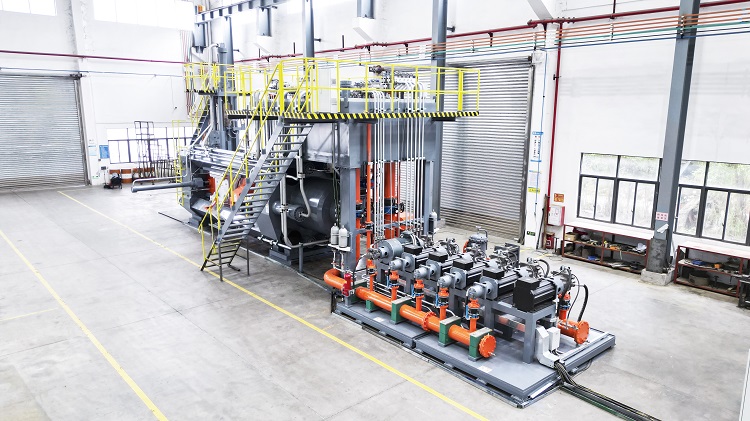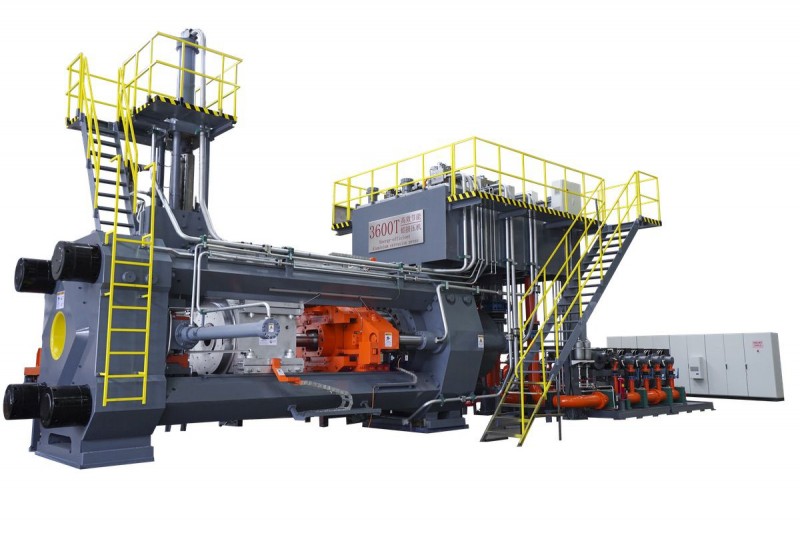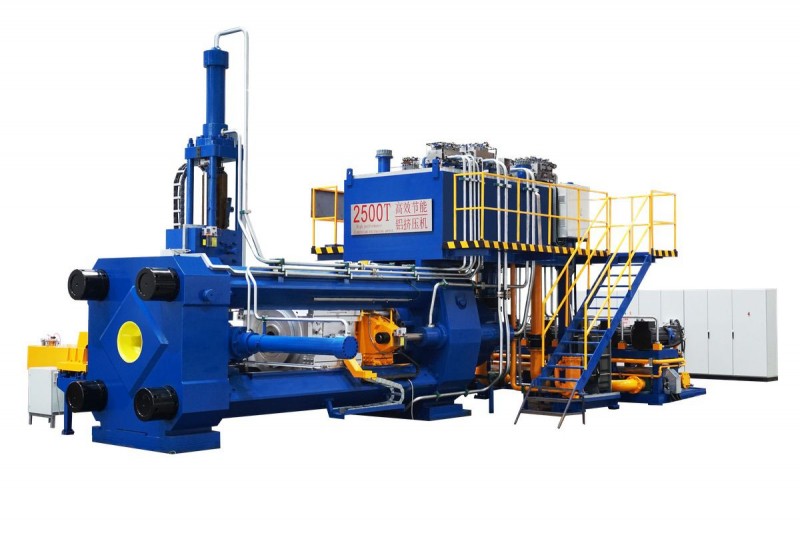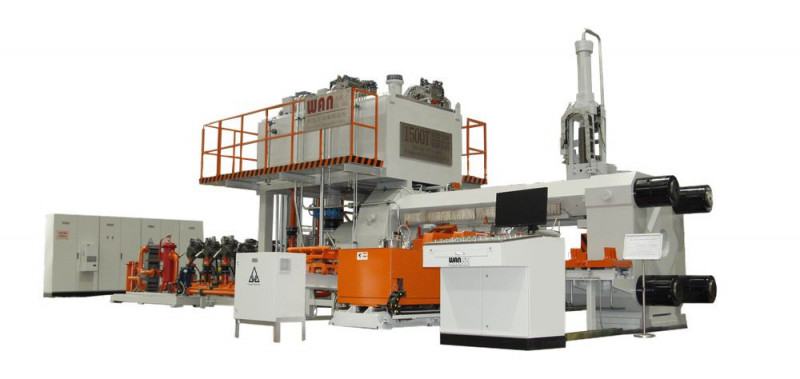It’s a happy moment when you get yourself an extrusion press, and you are up and running. But as it is with machines, it will get to that point when it fails to meet your project requirements. This is the point where you start thinking you were sold some counterfeit product. But that’s not it. It's just a common issue that results from the daily running of the extrusion press. If you are here, the best bet is you are facing such problems and want to know under which category they fit. So come on, and let's explore.

Before heading for the troubleshooting, let's have a quick reminder. An extrusion press is a machine used to turn chunks of aluminum or mold them into a specific design or shape. The machine employs hydraulics to generate pressure that pushes the aluminum through a die to create your desired shape. Under this scope of work, below are the common problems that most extruders run into.
If you haven’t been faced with the frustrating experience where you try to extrude sleek, straight aluminum profiles but end up with wavy, uneven pieces instead, here is what you need to know since you have it coming. The hiccup often results from temperature shifts within the press. So, some parts will cool before others, and that means non-uniform contractions.
It would help if you tamed these annoying waves by simply ensuring the extrusion press is heated uniformly with consistent temperature control.
Also, carrying out maintenance and inspection on your extrusion press can save you from these infuriating shapes. There could be some metals lodged in the system, and they won't melt at the same temperatures as your extrusion material. Instead, they end up shaping them.
The other prominent villain is the die-wear and tear. Now, you have to acknowledge the extrusion dies as the MVPs of the process. They are shaping the aluminum to perfection. But there is just one setback. Over time, no matter how tough your die is, it's going to wear down. The results? You get an inconsistent profile, which means a defective product.
Fortunately, you can save your skin by frequently inspecting your die. Consider checking out for signs related to wear or damage. If there are any, replace them ASAP and test the extruder by using a reject extrusion.
And so there is a time when you are quick to meet your extrusion production schedule, but your extruder turns out to be perfectly slow. Well, that's a productivity buzzkill and can cost you precious time and money.
Incidentally, you have the hydraulics to blame for the sluggishness. Please check those hydraulic systems. Expect it to be as simple as cleaning filters or adjusting the pressure, and soon, you will be back on track.
There is still some chemistry inside the extrusion press, just not enough to cause you a headache. This is the aluminum oxide, a sneaky corrosion that builds up on your press to cause friction and damage to your dies. Again, regular maintenance and cleaning can keep your extruder out of harm's way.
What you see when you look at crooked picture frames is the same thing you are going to spot when your aluminum extrusions come out off-center. It’s a common issue stemming from improperly aligned dies or guides.
It would help if you got things straight, so check on your dies and guides. For the least, they should be properly aligned, so you may have to adjust them to perfection.
Sometimes, you are running your extrusion press in a production line with CNC lines, producing batches based on a design algorithm. Then you unbundle them only to find them peppered with mysterious marks and defects.
Such defects are a result of material impurities and inconsistent die temperatures. You have to scrutinize your raw materials, maintain an optimal die temperature uniformity, and guarantee proper lubrication.
Now, here comes the dripping nightmare. It's not uncommon to find your extrusion press leaking hydraulic fluid like a faucet that won't shut off. While it's messy, it’s a recipe for the decline in press performance.
You have to check if the hydraulic lines and connections are in order. Go on and tighten the loose connections, and replace damaged hoses to be on the safe side.
When aiming for a sleek, flawless finish, it is not always guaranteed. One minute, you have it, and the other, you get an extrusion profile looking far from perfect. Who is guilty? It's the die, temperature, and the billet surface.
You can still get that impeccable finish. Just ensure your dies are in top-notch condition, maintain consistent temperatures, and use high-quality billet material.
Now, just like a printer's paper jam, extrusion presses can experience the same. This is an attribute of improperly loaded billets. The sticky situation can be avoided by loading billets properly and aligning them to the container.
While heating is normal, it could take a turn for the worse. Next up, your equipment gets damaged, and you experience downtime and increased maintenance costs.
You ought to keep it cool by maintaining an optimal operating temperature and monitoring your cooling systems. Also, regularly inspect and maintain the fans, radiators, and coolant levels. Ensure they dissipate heat effectively. Refraining from overworking your extrusion press if you're running it at high capacity for extended periods may help.
When your extrusion press experiences inconsistent pressure, you will end up with uneven profiles and defects in your aluminum products. You have to check your hydraulic systems for fluctuations in pressure.
The solution is to ensure that your pressure gauge is precise and the hydraulic fluid is at the right level. If you still need to, you can always refill before commencing your projects.
If you have been running your extruder for quite some time, your billet surface may resemble a mountain range. And just by that, you’re in for a bumpy ride in extrusion. They are the irregularities that lead to non-uniform extrusions and even die damage.
So, begin by inspecting the billets to address surface imperfections before you load them up into the press. It's quite easy to smoothen out any rough spots, cracks, or contaminants.
Now, here comes the most disguised problem. It will have you focusing on the press while the real trouble is on the die design. Assuming it needs to be properly designed, it will lead to complex extrusion challenges.
You have got to be keen on the die and tailor the design to match your extrusion needs. It is like cooperating with your architect to ensure your building is getting the right blueprint for a beautiful result.
An extrusion press running without oil is a recipe for disaster. That’s excessive wear and tear we are talking about.
You can prevent it by maintaining a consistent lubrication routine that ensures all moving parts are well-oiled. It’s still on you to check oil levels and the condition of lubrication systems. Also be attentive to screeching noises.
When you are screaming about a counterfeit extruder, you may be the faulty one. First, do you know that inadequate training can result in inefficient press operations? So quit playing with machines and guesswork.
Save your skin by investing in comprehensive training programs for you or your staff to ensure they understand the ins and outs of your specific extrusion press. Otherwise, you may replace parts of your extrusion press day in and day out.
The solid foundation for flawless extrusions depends on the quality of your aluminum billets. Understand that poor-quality materials could lead to defects and inconsistencies.
At all times, adhere to strict quality control measures for your raw materials. This is the time to partner with reliable suppliers and conduct regular material testing. More like selecting the finest ingredients for a gourmet meal, the foundation really dictates the outcome.
We should have placed electrical problems at the top of this list, but it's usually not the first thing that comes to mind when troubleshooting an extrusion press. It still doesn’t mean it won’t wreak havoc if left unattended. Watch out for voltage fluctuations or circuit failures, which could destroy your work or progress.
Further, ensure your press is connected to a stable power source with surge protection. On your part, you have to inspect and maintain electrical components to prevent unexpected downtime.
Sometimes, Mother Nature herself can throw a curveball into your extrusion process. First, temperatures can be damaging, since high temperatures lead to overheating, while extreme cold can affect the viscosity of hydraulic fluids and the performance of electrical components. Humidity may kickstart corrosion, while dust and debris may cause blockages and damage to sensitive components.
Also, settings with heavy machinery or nearby construction may experience excessive vibration and shock, which impacts the alignment and calibration of the extrusion press.
You need to find conducive locations to operate in. Similarly, installing climate control systems may suffice.
Okay, being complacent is a normal thing, but let's not bring it into extrusion. It's going to cause you more problems. Neglecting preventive maintenance can be countered by establishing a proactive maintenance schedule that includes regular inspections, lubrication, and parts replacement. Remember, at all times, there is only one insurance policy for your press: preventive maintenance. It’s the only way to ensure it stays in peak condition.
So, you now have 19 ways to figure out what kind of problems your extrusion press is facing. But lest it be real, there are times when you should wave the white flag and seek professional assistance. And below is the right time
1. Persistent Problems: When you have marked against all the troubleshooting tips and the issue persists, please call in the cavalry. You never know what a fresh pair of expert eyes can spot in regard to the problem you've missed.
2. Safety Concerns: fixing your extrusion press is not a do-or-die. So, when your safety is at risk, there's no room for compromise. These immediate safety hazards need to be mitigated and not by you. Halt operations and contact professionals immediately.
1. 3. Unfamiliar Issues: Extrusion presses can throw curveballs now and then. Only crack your head to figure out what to do if you are an engineer in this field. In case anything misses your wit and you persist, you could end up doing more harm than good.
3. Extensive Repairs: You may successfully do the troubleshooting process only to realize the need for extensive repairs or the replacement of critical components. This is a sign that professional help is needed. Remember, all complex repairs should be handled if only you have expertise and specialized tools.
4. Loss of Productivity: There is a time for downtime, and that will end up affecting your productivity and bottom line. It's time to act swiftly. Professional assistance can help you get your extrusion press back on track faster with minimal losses.
5. Maintenance and Calibration: On the norm, you have to do regular maintenance and calibration. But let's face it, what can you do if you lack the necessary skills or equipment for these tasks? You should enlist the services of professionals who specialize in press maintenance.
6. Manufacturer's Support: Normally, the manufacturer of your extrusion press will have at standby a dedicated technical support team. They can provide guidance, troubleshoot issues, and offer solutions specific to your equipment. And it serves best if you are afraid of enlisting third-party technicians.
Okay, now let's finish this. This guide was to kick you in the right direction toward troubleshooting aluminum extrusion presses. Even so, you need to remember that troubleshooting isn't just about fixing problems. No, it's about optimizing your process to achieve consistent, high-quality results.
These challenges are all common, but they never have to be. That’s why you are advised to source your extrusion press from reputable manufacturers. Even if things take a turn for the worst, you will still have a warranty cover.
The ones who care about your industrial running will always be ready to dispatch their technical teams to fix the problems your extruders run into. Wangeshi is such a manufacturer!


